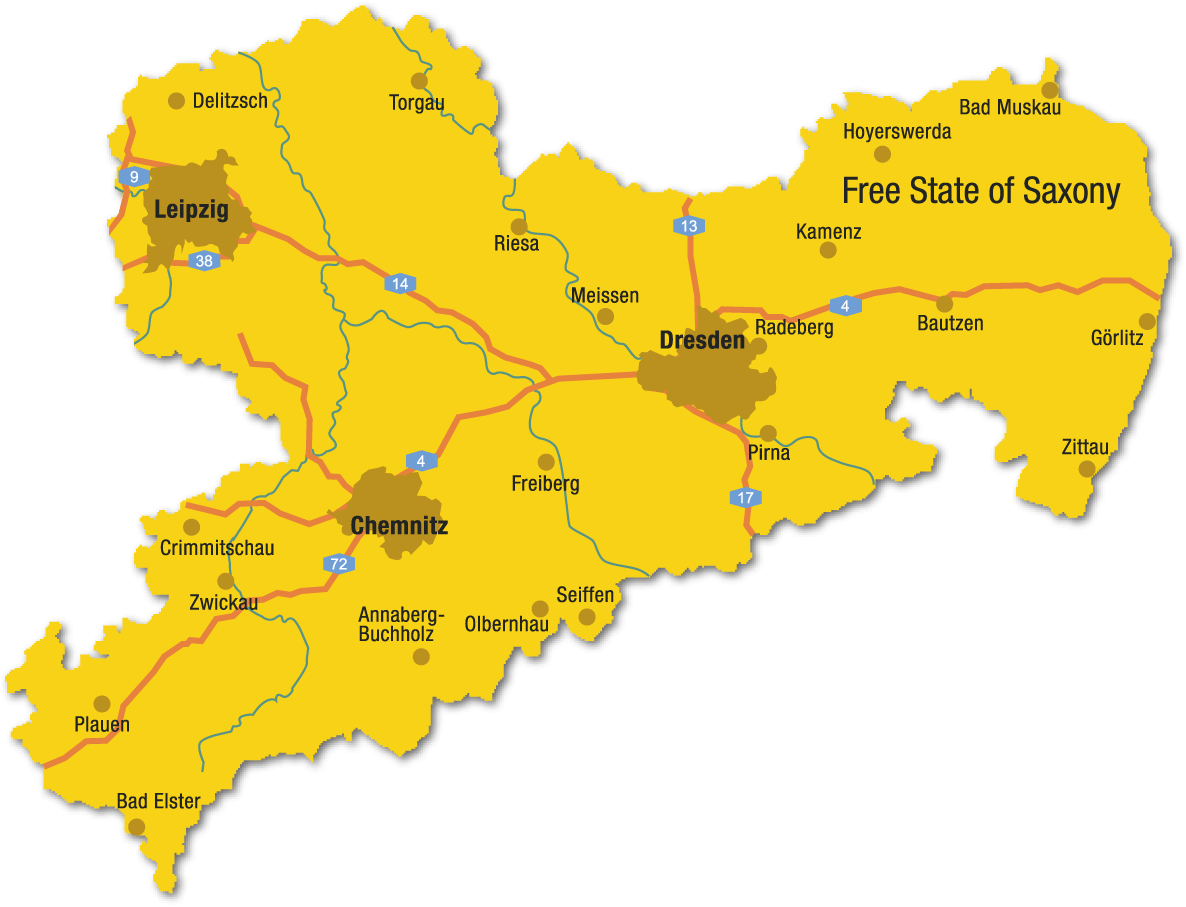Wettin Castle rises nobly above the wide river only a few miles away from the city of Halle on the Saale River. This is from where the ancient German dynasty of the Wettins, which was rooted deeply in the history of the German states of Saxony, Saxony-Anhalt and Thuringia for about 1000 years, derived its name.
It began with Conrad the Great in 1125 when he was enfeoffed by Emperor Henry V with the Meissen Margraviate .
By acting cleverly and by uncovering large silver and ore deposits, the territory was able to develop into a flourishing land. It was only due to the social changes resulting from the World War I, that the last of the Wettin dynasty in Saxony, Frederick Augustus III abdicated in 1918.
Rochlitz Castle (A)
»Fat. One-eyed. Revolutionary« – These are certainly not the only features to characterize Dedo von Groitzsch, Conrad I von Wettin and Elisabeth of Rochlitz. This new permanent exhibition of that title provides yet further insight into the lives of these Wettin rulers.
The Imperial Castle of Rochlitz became property of the Wettins in 1143 and, over the centuries thereafter, it remained closely entwined with the ascent of the Wettins in Saxony. As early as from 1156, the castle and office saw a quick rise thanks to the colonial expansion of the state under Dedo the Fat, who, by hereditary division, received the Rochlitz property. Four hundred years later, Elisabeth of Rochlitz, the widow of Hereditary Prince John of Saxony, gave permission, against her father-in-law’s will, to introduce the Lutheran teachings in the Rochlitz areas and in Kriebstein.
From November to February, Rochlitz Castle is closed to the public.
Further to Station B – Altzella Monastery, ca. 48 km
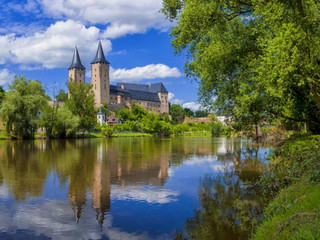
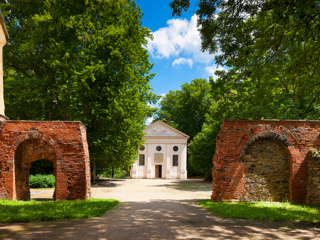
Altzella Monastery (B)
The important Cistercian monastery of »Cella Sanctae Mariae« was founded by Margrave Otto of Meissen in 1162. On his initiative, the hereditary burial place of the Wettin dynasty was relocated to the monastery. In memory of his ancestors, Elector John George II had a burial chapel built towards the end of the 17th century. Even today, the burial slabs of Margrave Otto of Meissen, his wife Margravine Hedwig and her sons Albert the Proud and Theodoric the Oppressed can be seen in the mausoleum. The burial place lies embedded in a romantic landscape park which was laid out around 1800.
The monastery park is open daily from 10 am, except on Mondays, from April through October.
Details on Altzella Monastery Park
Further to Station C – Freudenstein Castle, ca. 20 km
Freudenstein Castle (C)
Freudenstein Castle, too, is closely connected with the history of the Wettin dynasty: After silver had been found in Freiberg, then known by the name of Christiansdorf, Margrave Otto of Meissen had a castle built in 1168 for the protection of silver mining. From 1505, Duke Henry the Pious resided in Freiberg for most of his time. After he had succeeded his brother as Duke of Saxony, he introduced Protestantism in his territory as the state religion. His sons, the later electors of Saxony, Maurice and Augustus, were born in that castle. Today, the castle is home to the exhibition »Terra Mineralia«, an extraordinary collection of mineralogical finds from all over the world.
Details on Freudenstein Castle
Further to Station D - Dresden Residential Castle, ca. 50 km
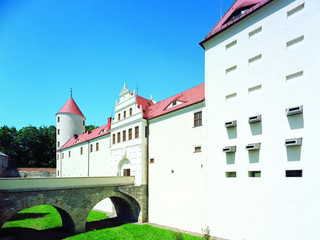
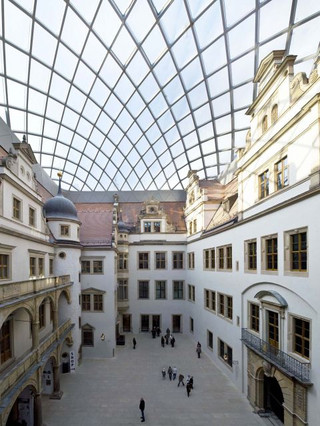
Dresden Residential Castle (D)
Augustus the Strong passed his passion as a collector on to his son Frederick Augustus II. It was him who had Raphael’s Sistine Madonna brought to Dresden. Under his auspices, the Picture Gallery became one of the most renowned art collections in the world. On occasion of his wedding in September 1719 with the Emperor’s daughter Maria Josepha, his father had the castle newly decorated, furnishing the representative apartment in the west wing especially costly and pompously. As part of the reconstruction of the castle, this representative apartment is now being restored as it appeared in Augustan Age .What can be admired already are the Old and New Green Vaults, the Armory, the Coin Cabinet and the Turkish Chamber. The exhibition »World Power and Knowledge around 1500« conveys the idea of the spoiritual and scientific trends at the time of the first Saxon electors.
Details on Residential Castle Dresden
Further to Station E - Albrechtsburg Castle Meissen, ca. 27 km
Albrechtsburg Castle (E)
Albrechtsburg Castle is the first German palace building on German soil and a masterpiece of late-Gothic architecture. It emerged between 1471 and 1524 by order of the brothers Ernest and Albert of Wettin who ruled Saxony jointly until 1485. Its builder, Arnold von Westfalen, was faced with the demanding job to design a representative place of administration, which would accommodate to separate courts at the same time. Despite the superb solution of the task, the brothers used the palace as their residences only for eleven years. In 1485, however, they decided to divide their territory of rule. Albert relocated his main seat to Dresden, Ernest moved to Wittenberg. Until 1710, when the Meissen Porcelain Manufactory moved in, it was merely used for receptions, special events for holding court or hunting parties. In the new permanent exhibition, you can embark on a 500-year journey back in time to see the original venues of the Wettins’ fascinating court culture.
Details on Albrechtsburg Castle
Further to Station F - Hartenfels Castle, ca. 67 km
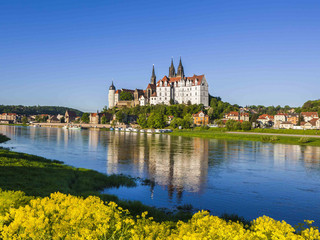
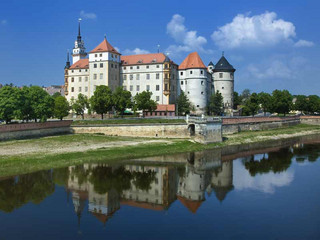
Hartenfels Castle (F)
Only one year after the 1485 Division of Leipzig, Elector Frederick III (the Wise) had building works started on Hartenfels Castle in Torgau to become the main residence of the Ernestine line. He was the one who opened the Alma Mater Leucorea in Wittenberg, the university. And it was also him who secured safe conduct for Martin Luther and had him transferred to Wartburg Castle, after the Diet of Worms had outlawed him. Present-day Hartenfels is Germany’s largest completely preserved early-Renaissance castle. The Large Spiral Staircase in the court yard must have aroused awe and true calls of admiration in those times already: the »impossible staircase« by the great master builder Konrad Krebs is self-supporting without any central load-bearing pillar. Hartenfels was regarded as a »modern residential palace«. Odd testimony to this is the – innovative in its time – elevator for lowering drinks in the bottle tower, which – with the sound of quietly clinking bottles – provided the wining and dining nobility with fresh supplies.
